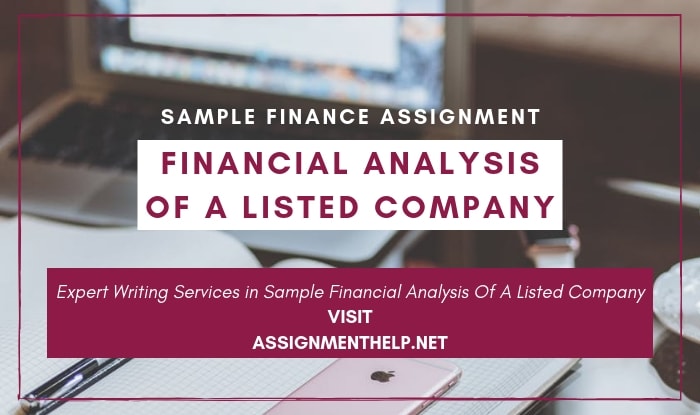Financial Analysis Of A Listed Company Assignment Help

Abstract
The following paper is a financial analysis of a listed company. The analysis includes a management report to the CFO of the company answering the following questions: the beta of the equity of the company, financial structure of the company, unleveraged beta of the company, value of the tax shield of the company.
Introduction
This is the largest global paints and Coatings Company and a major producer of specialty chemicals. The company earned total revenue of € 13.9 billion with 34% of its revenue coming from Decorative Paints, 29% from performance coatings and the remaining 37% from speciality chemicals.
Risk and return
If we compare the performance of the company with that of, (refer to the chart shown below) we can see that the performance of the company has improved over the last two years. If we see the risk profile of AN: Jensen’s Alpha is 0.302 and R2 correlations as 0.609. AN’s long and short-term debt appears manageable and there are available lines of credit in excess of €1b and cash/near cash of nearly €1.2b. With maturing debt refinanced, AN has a robust balance sheet. The greatest risk is the continuing decline of the share price – the firm’s declining market value may attract speculative break up bids. Still the firm’s long-term fundamentals appear robust and the firm has weathered the recession and financial crises.
Hurdle rate: 7.84%
Euro risk rate + NL risk Premium
3.34% 4.5%
Expected Return: 8.3%
Euro risk rate + Beta (NL risk Premium)
3.34% 1.105*4.50%
Financial Analysis Of A Listed Company Assignment Help By Online Tutoring and Guided Sessions from AssignmentHelp.Net
Cost of Equity: 8%
Euro risk free rate + Beta (NL risk premium) + country bond default spread
3.34% + 1.105 x 4.50% + 0 = 8%
Cost of debt: 6.9%
After tax cost of debt = pre-tax cost of debt (1-marginal tax rate)
6.9% 9.27% 1 -.2550 = 0.745
Bloomberg cites the firm's effective tax rate as 33.16%, the average of long and short-term debt is €3.634b and interest charges were €337m.
Cost of Capital: 7.93%

Capital structure choices and Optimal Capital
AN has raised funds primarily through divesting its own assets and cleverly pre-agreeing the sale of part of ICI to Henkel during its audacious acquisition. For continuous operations AN relies on a combination of debt and equity but is currently weighted to the latter; the weight in cost of capital is 73% equities and 27% debt. Having issued a €750m bond in March and a £250m bond in April 2009, the firm has completed its refinancing and lengthened the duration of its debt book. The capital structure of the firm is as follows:
| Equity | Debt | Preferred Stock | Capital | |
| Weight in Cost of Capital | 72.78% | 27.22% | 0.00% | 100.00% |
| Cost of Component | 8.31% | 6.96% | 1000.00% | 7.94% |
AN's effective tax rate is high at 33.16%; the rate is only 12.86% for industry rivals and 25% for The Netherlands. Insider holding is low and yet the firm carries a relatively low level of debt burden. The volatility of earnings and cash flow is low and the strong cash and access to debt position of the firm entails a low risk of bankruptcy. The nature of the firm's activities – specialty chemicals – would result in high indirect costs in the eventuality of bankruptcy. The lion’s share of the firm’s assets is tangible: factories, patents and products.
In robust economic times, the optimum debt ratio for AN would be 40%. As debt is tax deductable greater debt would benefit the firm. Greater debt would help focus managers to make prudent financial decisions for the firm in the future as senior management own relatively few shares and overpaid for the most recent large acquisition. The cost of debt is cheaper to AN than the cost of equity. Downside risk is limited as evidenced by the firm’s operating income falling a manageable 12% at the height of the recession in 2009.
Yet while global economic activity remains subdued and changes in the market continue to account for the majority of AN's performance, it is unlikely that AN will either grow its revenues or earnings greater than the cost of borrowing. Hence further leverage may not be advisable.
Dividends
AN last bought back stock in 2008 when it acquired 12.1% of outstanding shares. Since then the firm has postponed/cancelled stock buy backs due to the economic crises. Last year the dividend payout was 57% versus 48% in 2008. This compares with an industry-wide dividend payout of 88%. In light of the times and AN's recent performance, the dividend policy appears prudent. However, in the future shareholders are unlikely to tolerate any new significant acquisitions at the expense of returning cash to owners; serial acquisitions and demergers may well be a thing of the past. As business performance improves the pressure to resume stock buy backs and to make higher dividend payments is likely to increase.



